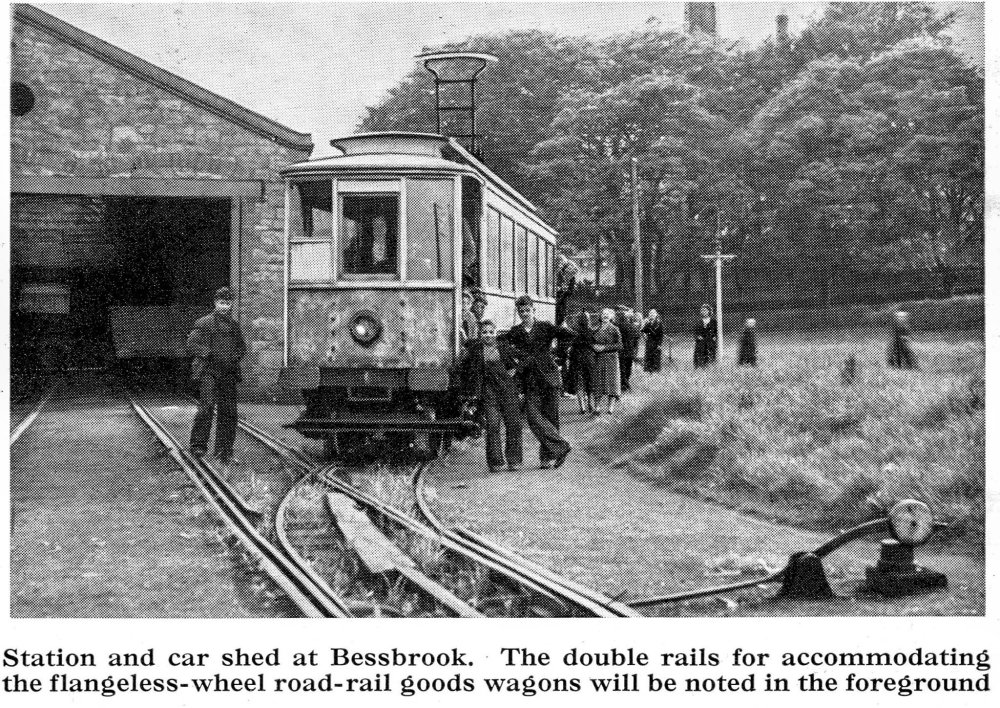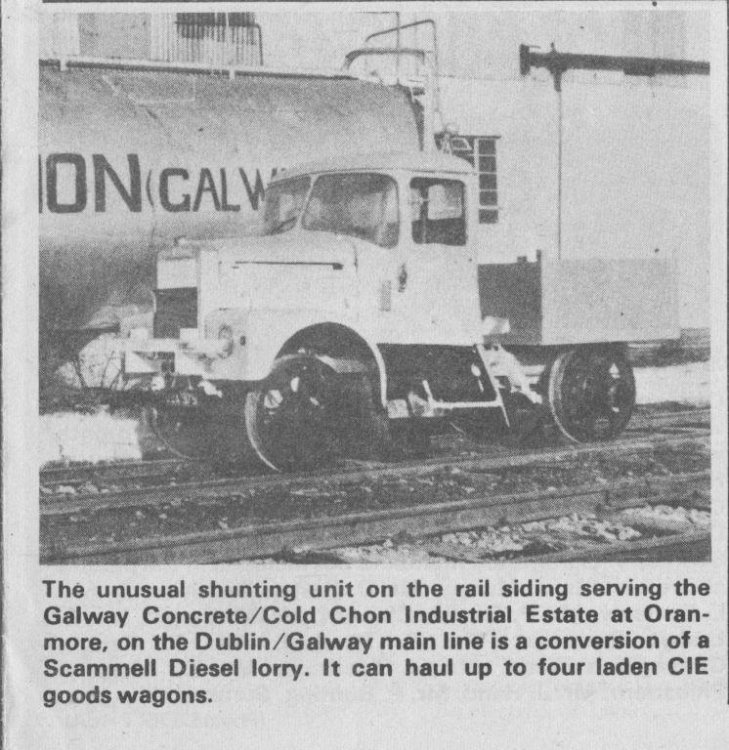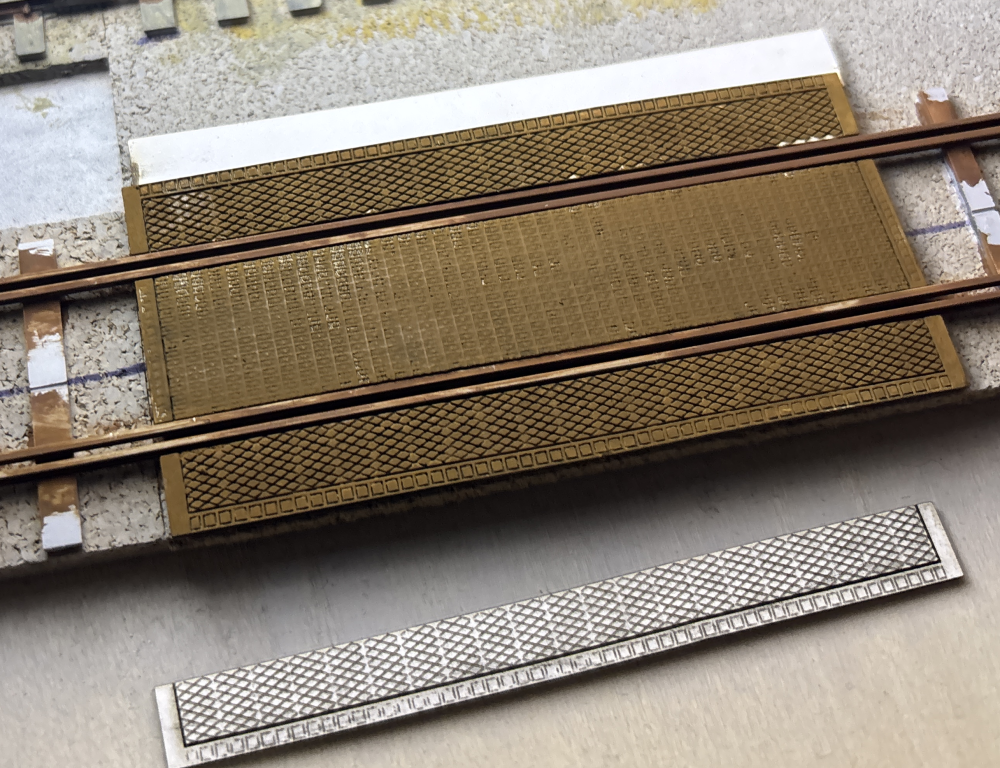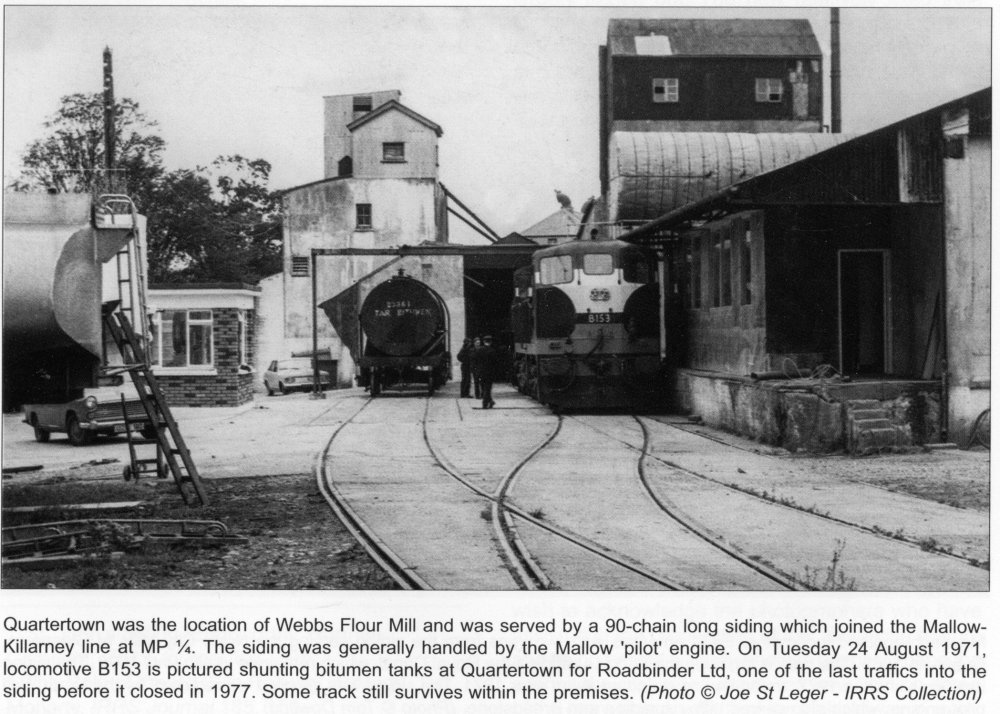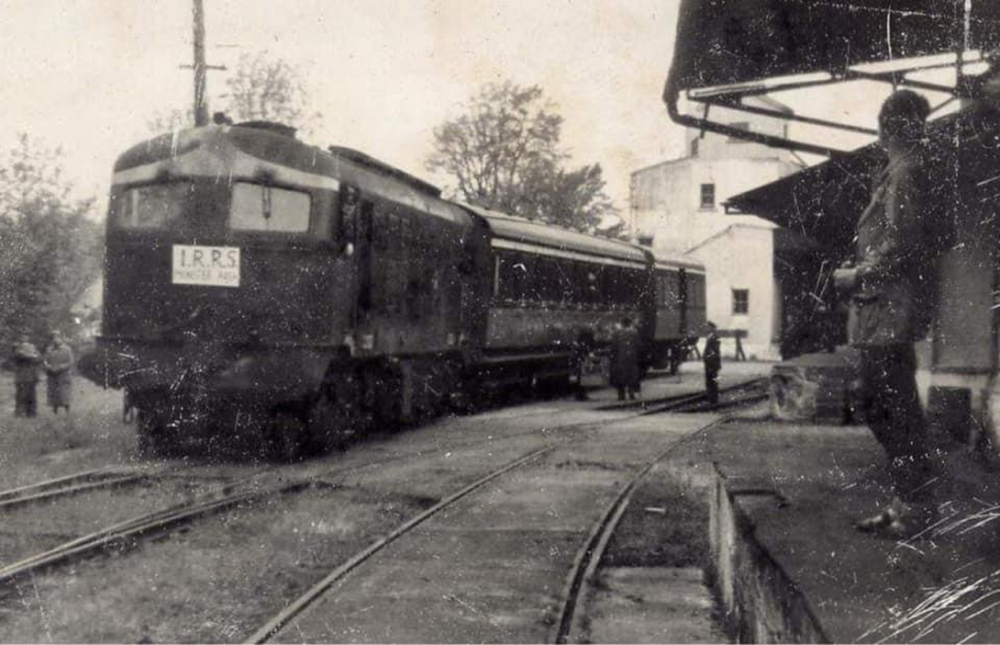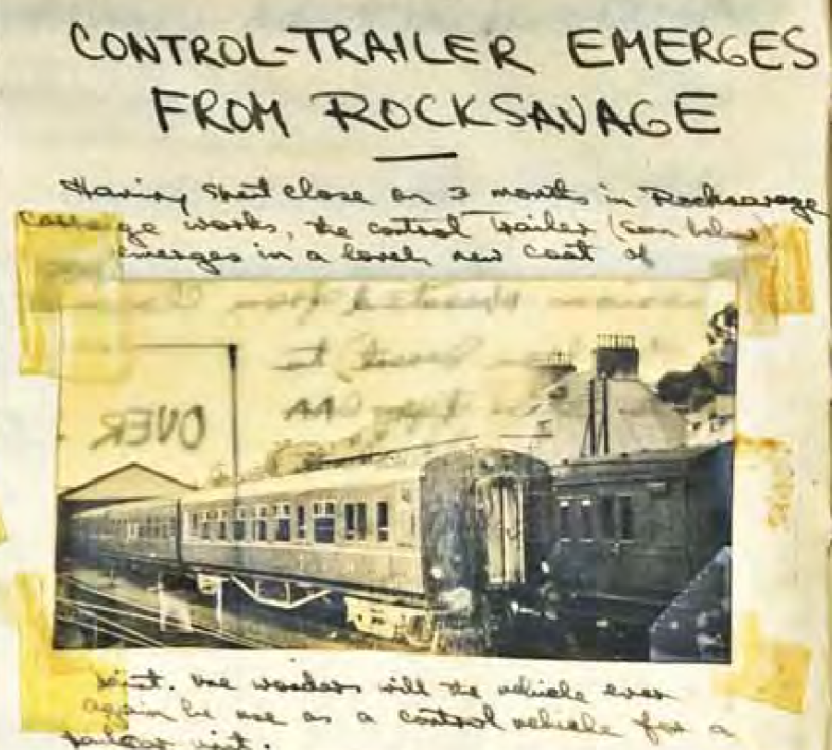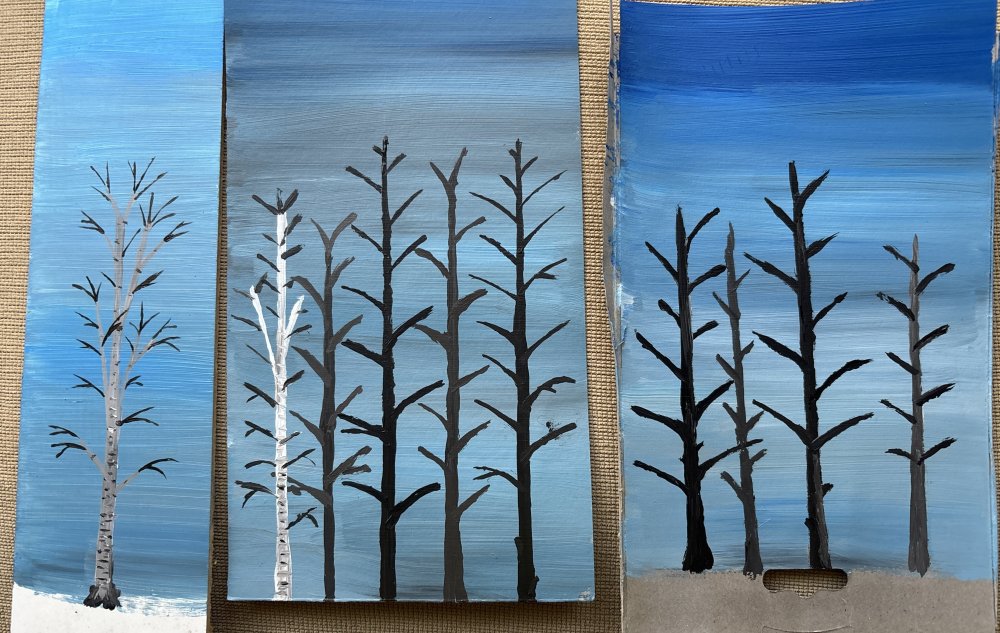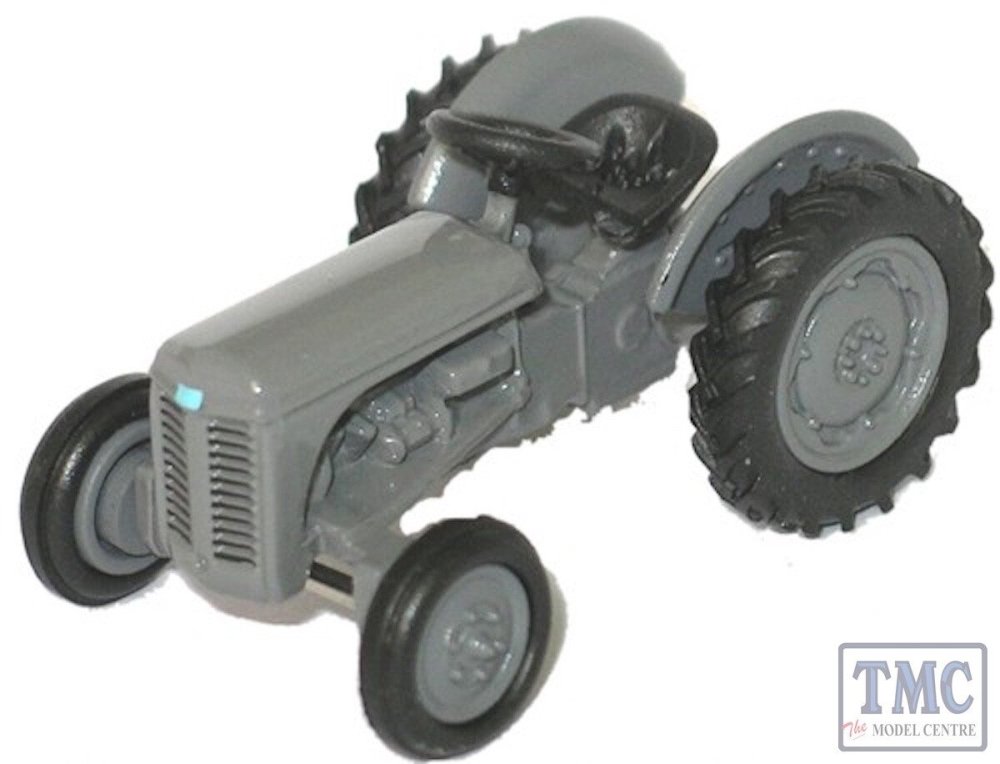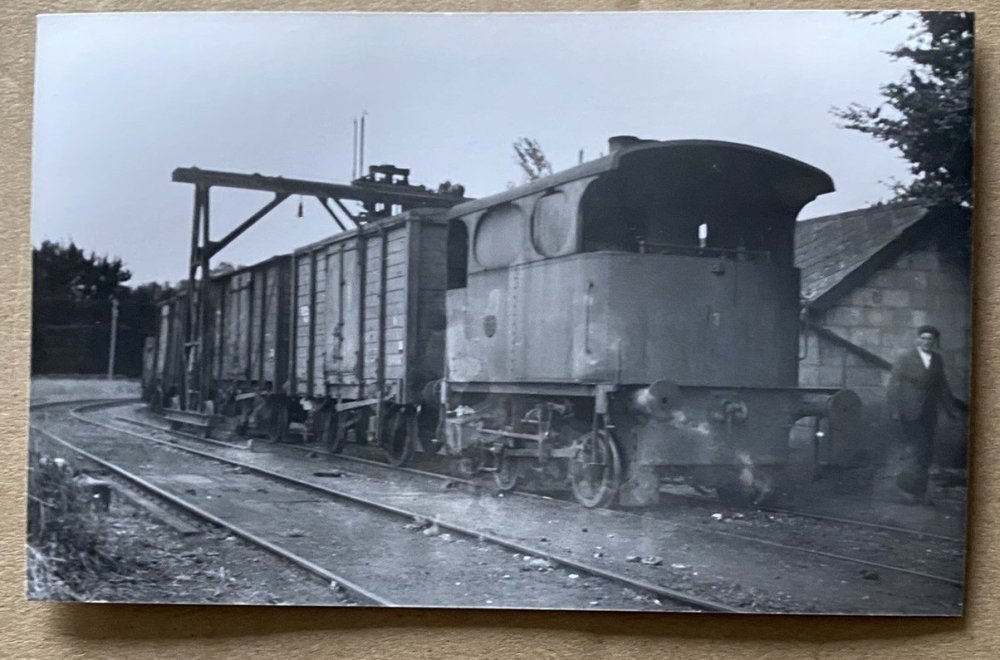
Mol_PMB
Members-
Posts
2,271 -
Joined
-
Last visited
-
Days Won
124
Content Type
Profiles
Forums
Events
Gallery
Everything posted by Mol_PMB
-
Would you model in 21mm if RTR track and models were readily available?
Mol_PMB replied to BosKonay's topic in Irish Models
They seem to be offering a spiked FB track for narrow gauge applications, so presumably the same trackform could be offered for broad gauge? Not sure if they're doing pointwork for that yet. I cheated a bit with my points, because (by luck) the crossing areas are embedded in concrete on the prototype, so you can't see the rail section. So I built mine using a mix of code 75 FB and code 75 BH, making the crossings and checkrails from BH and the rest from FB. -
The Accurascale 5x Black Friday Sale Starting Now!
Mol_PMB replied to Warbonnet's topic in British Outline Modelling
No wonder the black friday sale is a bit stingy, if they have to save up to pay your salary! -
I know I'm resurrecting an old thread. I bought some new books from the RPSI recently and added to my order the booklet about the Bessbrook and Newry Tramway. This is closely based on A.T.Newham's original work from the 1970s but reprinted in a modern form with the photos reproduced to a larger size and a better standard. The IRRS has a few photos of the line in their collection, but many are also in the book: https://www.flickr.com/search/?user_id=142947080%40N07&view_all=1&text=bnt A bit on Wikipedia: https://en.wikipedia.org/wiki/Bessbrook_and_Newry_Tramway This site on uniforms has a nice selection of photos too: http://www.tramwaybadgesandbuttons.com/page148/page4/styled-259/page682.html I hadn't realised that that surviving tram in Cultra had been so heavily modified from its original condition. Over on this thread, @jhb171achill posted a photo which doesn't appear in the book or elsewhere online, intriguingly it shows a van with doors in the side, whereas all the other photos of vans I've seen appear doorless (maybe the doors were in the end, or on one side only?) https://irishrailwaymodeller.com/topic/6037-from-the-catacombs/#findComment-130009 This may be the other side of the same van, though if so the wheels have been replaced at some stage: Relating to the decade-old question at the start of this thread, this photo from a Facebook site shows something of the complexity of the pointwork. The whole system didn't have many points, and not all routes were usable by the flangeless wagons (for example, the turning loops at each end were only suitable for flanged wheels). Going over these points, the flangeless wheels on one side must have had to bump over the raised running rails. There seem to have been very few points where the wagons had a choice of route, but there must have been 3 or 4. What a fascinating little line! I must avoid getting distracted into a narrow-gauge modelling whim... It looks like someone else has had a go: https://www.rmweb.co.uk/topic/180079-volks-electric-black-rock-station-diorama-and-other-early-electric-traction/#findComment-5213273
-
On RMweb it’s been confirmed that the Chontar Albion was at Paisley in Scotland. Cold Chon in Ireland used a similar Scammell conversion which still exists at Dromod.
-
With both these and the Mk3s, there were some early changes within the first couple of years of use. Particularly relating to first class, composite and catering vehicles. I think the identity of the state coach was changed too. The Mk2s had been intended to run in short rakes, hence the quite large proportion of catering, generator and first class vehicles. Soon the patterns of traffic changed and they were re-formed into fewer, longer rakes. There were also some further changes to the Mk2d fleet when they were replaced by the Mk3s on the top-link turns, and less first class accommodation was needed on the secondary duties. I think your listing is accurate for the post-1990 period but some things would have been different in the 1970s and early 1980s. The changes were quite well recorded in the IRRS journals of the time and I think I have many of those. I could check through and do a summary for you if you like?
-
"Voiding the Warranty" - Mol's experiments in 21mm gauge
Mol_PMB replied to Mol_PMB's topic in Irish Models
Many thanks David, that’s great advice. I shall do some more practice with the sky and trees! -
Nice! I believe the couplings between cars can be another source of derailment on these - either fouling on the body or the fixing screws a bit tight so they don’t swing freely.
-
"Voiding the Warranty" - Mol's experiments in 21mm gauge
Mol_PMB replied to Mol_PMB's topic in Irish Models
Weighbridge: I drew this up during the first half of this evening's IRRS talk, then laser-cut it and slapped some paint on. I'll probably fine-tune some of the engrave depths and do a final version for installation. I'll also need to put some slots in the rail heads to match the ends of the weighbridge. -
"Voiding the Warranty" - Mol's experiments in 21mm gauge
Mol_PMB replied to Mol_PMB's topic in Irish Models
Weighing up the options... Your thoughts welcome on the following. The latest photo I have of the sidings at Quartertown Mill is this one dated 1971. By this time I think the grain traffic had ceased but bitumen continued. Compared to the 1966 photos, there are some changes to the main buildings to suit the change in use. My model will normally represent the early 1960s period, rather than this later condition. Looking at this 1971 photo, I think the brand-new brick building on the left is most likely a weighbridge office - with a fairly large weighbridge set into the ground in front of it, positioned so that it could weigh either road or rail vehicles. This is a guess based purely on this photograph. Does it seem plausible? Now, the brick building wasn't there in the 1960s, and the area that was concrete-paved was also different. The short siding was paved, but not the points to the right of it. However, there seems to have been a larger concreted area to the left of the siding. This photo shows a similar view from a bit further back. Notable in the photo above, just to the left of the loco, is a small white building which might be in a very similar position to the later weighbridge office. We can only see a bit of it, but its size and the large window in the end suggest it might be an older weighbridge office. I guess it would be plausible for a mill like this to have a weighbridge. If we assume there was an older weighbridge in the 1960s, then why was it replaced with a new version by 1971? I assume it wasn't big enough for the larger/heavier vehicles being introduced. So: Shall I model the older weighbridge, based on a glimpse of what might be its office? Do you think the old weighbridge would have been road and rail combined, or just in the road beside the siding? How big would it have been (probably not as big as the 1971 weighbridge, or else why replace it? The only other photo of this area isn't much help as someone's parked a train in the way. I can't obviously see a weighbridge in the track under the tin van (which would be the right place) but the photo isn't the clearest. Any thoughts welcome! Or the loan of a time machine... -
Here: Interesting, we both found it at exactly the same time, but not the same version of the image.
-
I just found this image over on RMweb: I'm not sure where or when this photo was taken - it could well be in the UK. Both CHONTAR and COLD CHON were used as trade names by Scottish Tar Distillers, according to this list: https://ia902906.us.archive.org/18/items/in.ernet.dli.2015.502210/2015.502210.British-Chemicals_text.pdf I wonder whether the Irish COLD CHON was related to the Scottish firm? Did the Irish firm have their own tank wagons in the early days? They were established in 1927.
-
Excellent - thanks for bringing together this info. There's a nice photo of one of the AEC driving trailers freshly repainted at Rocksavage - I'll try to find it. Possible unique in having a traditional carriage underframe painted silver.
-
Would you model in 21mm if RTR track and models were readily available?
Mol_PMB replied to BosKonay's topic in Irish Models
Great to hear of someone else joining the broad gauge team, and a nice combination of scale and gauge. That option for printing turnout bases looks very good, lots of options. Thanks for the link. I will definitely consider that for a future layout - I've made my own copperclad points for the current 21mm gauge project. -
"Voiding the Warranty" - Mol's experiments in 21mm gauge
Mol_PMB replied to Mol_PMB's topic in Irish Models
Today (and yesterday afternoon) have been mostly spent painting. I started by trying to learn how to paint sky and tree trunks. On a few offcuts of hardboard and cardboard I've had a go at blending shades of blue and grey to make a sky, and then painting tree trunks and branches. I'm no artist so my first attempts were too crude, but by choosing a better mix of colours on the palette and using a smaller brush for the trees, I'm gradually improving. I still need some more practice before tackling the backscene itself. I also need to try painting the foliage. In most cases these painted trees will be in the background behind 3-dimensional trees on the model, so they don't have to be perfect. With the kindergarten art class done, I have fettled the backscene assembly, filling and rubbing down any rough areas and the heads of the pins I used to hold it together. I have also sealed it all over, and painted the front with a coat of white as the basis for the sky and trees. On the board, I started by priming the track with some of that horrible new Halfords grey primer. It's no good at all for rolling stock, so I used it up on the track. I did the fiddle yard too, mainly to protect the 3D printed track bases. Then I made a palette of greys, browns and blacks to paint the sleepers, followed by some shades of reddish-brown for the rails. These were all brush-painted. It's not perfect, but once ballasted I'll use the airbrush to lightly spray some more brown and blend it together a bit more. @Rob R's track bases look quite effective in a weathered wood finish - complete with a few splits and holes! I need to do some more fine-tuning with the magnetic uncouplers before I think about ballasting the track. -
A J15 if anyone's looking for one, and it's on your side of the water: https://www.ebay.co.uk/itm/257230571192 Note the listing says round top but the model is a Belpaire.
-
Road goods vehicles in Ireland 1950s/1960s
Mol_PMB replied to Mol_PMB's question in Questions & Answers
Many thanks John for all the info and for this photo reference. I've just had a close look at the photo, agreed it's a 1960s AEC Mammoth 8-legger, which is a type available in model form from EFE The one at Ballysodare appears to have a dark green cab, possibly with a circular logo on the cab door. The body of the vehicle is grey as you say, it looks a boxy shape but it's very hard to make out what type of body it is. The colours could be CIE, but equally could be any other firm with a green livery. Regarding grain and flour trucks, mostly GB types but with a few Irish ones, there is a really excellent set of photos here: https://www.trucknetuk.com/t/mainly-rank-hovis-spillers-milling/225912?page=1 The show a great variety of shapes of bulk flour bodies, as well as a nice selection of flatbeds and other types. I'm not attempting to model Ballysodare, but the simpler Quartertown. Owned by Webbs for most of its life I have read that it was latterly part of the Ranks empire. -
Road goods vehicles in Ireland 1950s/1960s
Mol_PMB replied to Mol_PMB's question in Questions & Answers
Thanks Mick - I’ll have a look. -
Road goods vehicles in Ireland 1950s/1960s
Mol_PMB replied to Mol_PMB's question in Questions & Answers
Based on what I recall from my visit to Cultra a few months back, I guess this Oxford model in 1:76 is the best option for... Though possibly with an attack of weathering: -
Road goods vehicles in Ireland 1950s/1960s
Mol_PMB replied to Mol_PMB's question in Questions & Answers
I'm quite tempted to see what these two EFE models of AEC trucks would look like in CIE green. -
Nice view of one of the few Belgian locos to run in Ireland, on eBay at present: https://i.ebayimg.com/images/g/pt0AAeSwBnVpJySs/s-l1600.jpg
-
The Accurascale 5x Black Friday Sale Starting Now!
Mol_PMB replied to Warbonnet's topic in British Outline Modelling
Same for me. There's not much Irish in-stock that I haven't got already! And only a couple of weeks ago I bought some of those ESU goodies. Ah well, I'll save my money for other things. -
Road goods vehicles in Ireland 1950s/1960s
Mol_PMB replied to Mol_PMB's question in Questions & Answers
For Quartertown Mill set loosely in the 1960-1975 period I think I'm before the Hino period, but I also remember them everywhere in the 1980s and 1990s. Even then, there were still plenty of donkey carts to be seen on the roads, a few churns of milk or a mound of hay on the back (not many balers in the west of Ireland in the 1980s as I recall - lots of rounded haystacks, sometimes on stone 'mushrooms', with a small tarp on top held down with weighted ropes - like half a bikini). Ancient trucks and tractors - definitely. I have a strong recollection of red numberplates, but I think they were a 1970s thing and may be too late for my period (certainly on older vehicles). -
Road goods vehicles in Ireland 1950s/1960s
Mol_PMB replied to Mol_PMB's question in Questions & Answers
Many thanks, great stuff! -
Interesting. It was 6208 at one stage, but that 7173 looks like the same vehicle. I suspect the bogie maintenance intervals may have influenced the usage?
-
Road goods vehicles in Ireland 1950s/1960s
Mol_PMB replied to Mol_PMB's question in Questions & Answers
The CIE ones seem hard to find, but there’s actually a fairly good range of 1950s and 1960s AEC trucks from EFE and Oxford, as well as Base Toys. A bit of paint and some CiE transfers and they could be quite convincing I think. There are a few trucks available in Ranks livery but I think they are GB prototypes and probably too big for 1960s Ireland.
.png.c363cdf5c3fb7955cd92a55eb6dbbae0.png)


